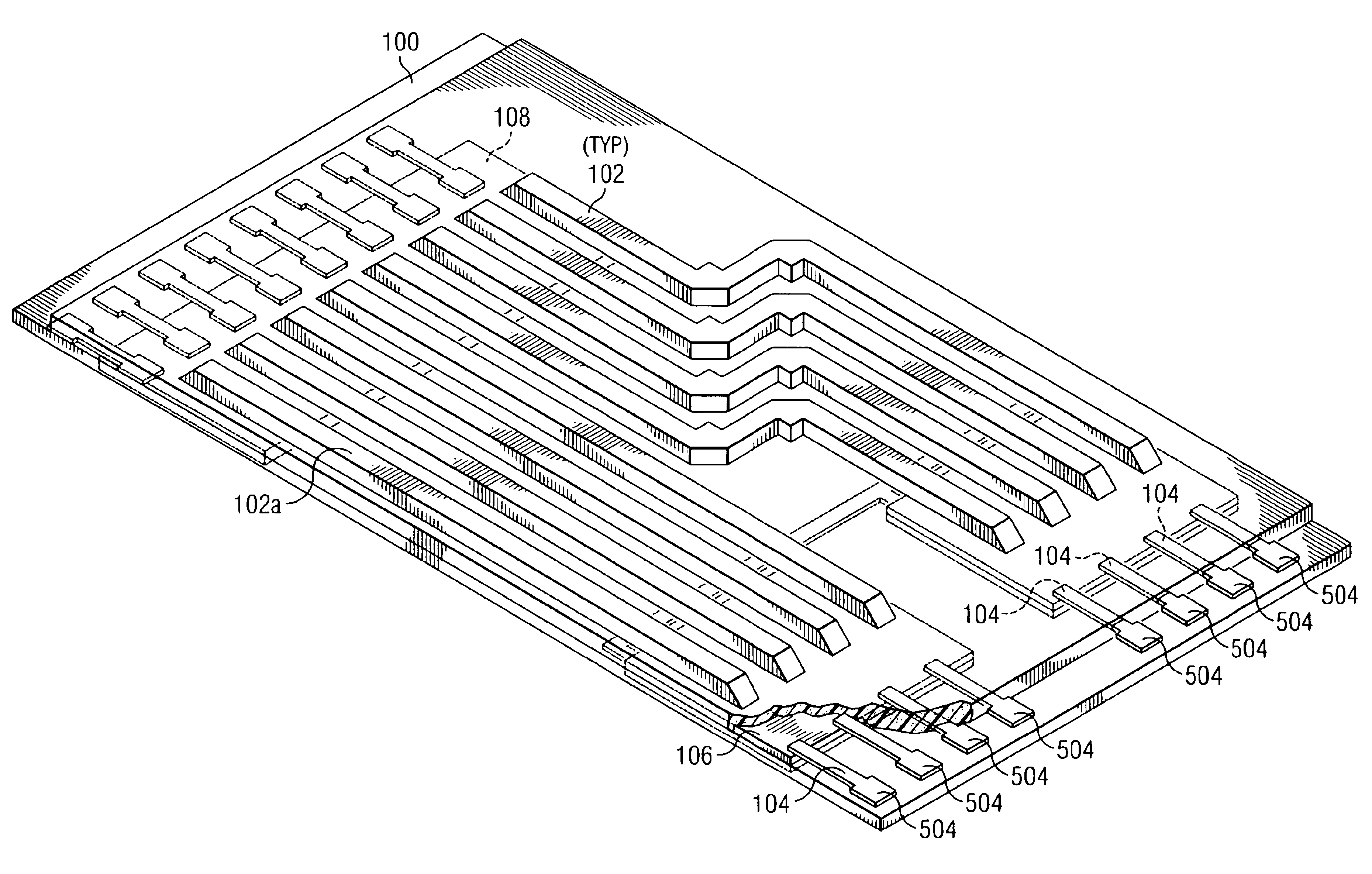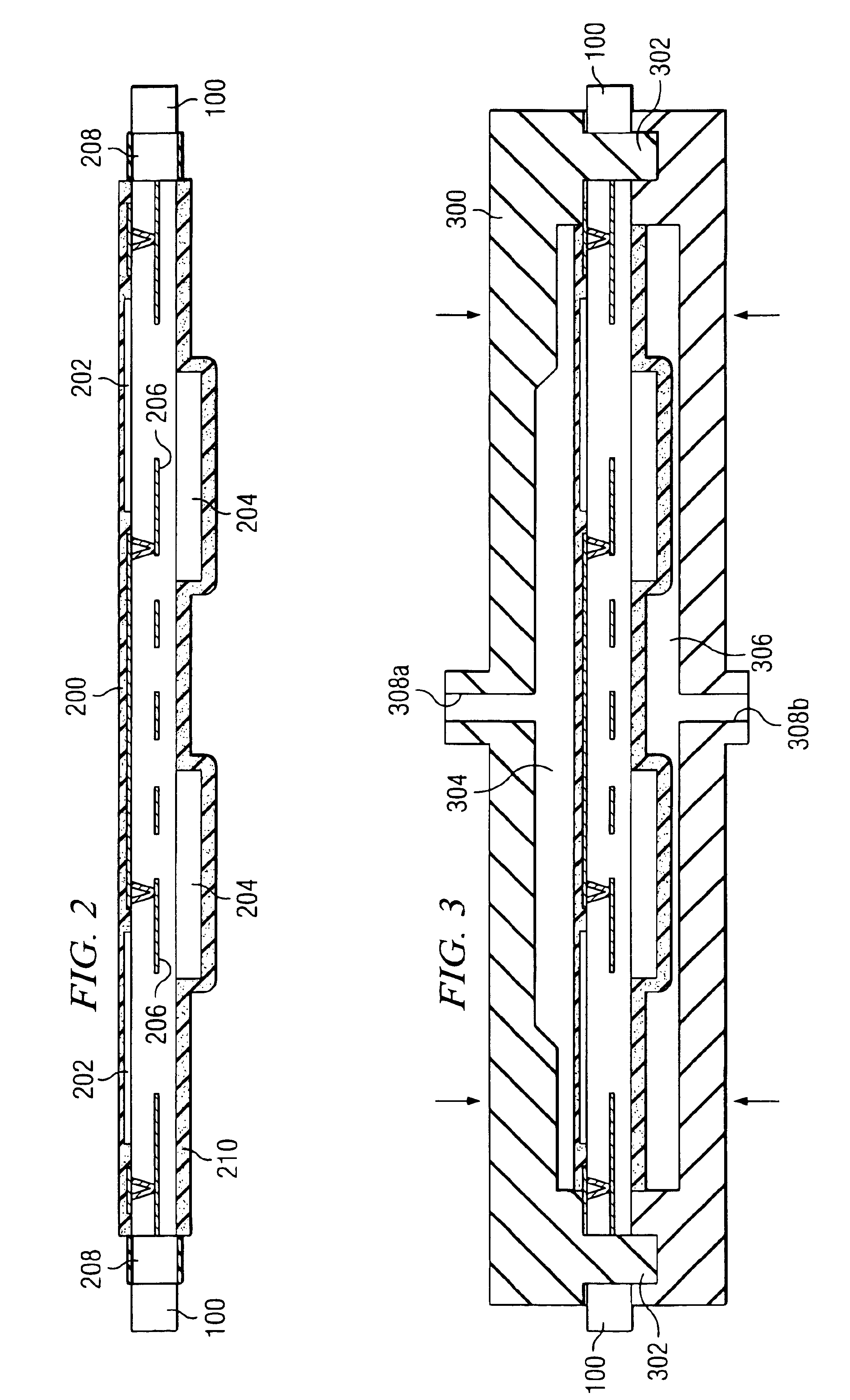Method for forming an optical printed circuit board
a printed circuit board and optical technology, applied in the field of printing circuit board manufacturing, can solve the problems of high manufacturing cost, difficult and manual laborious integration of optical, electronic and optoelectronic components, and bottlenecks in electrical interconnection, so as to improve the clock speed of electrical components, eliminate bottlenecks, and high-speed optical communication
- Summary
- Abstract
- Description
- Claims
- Application Information
AI Technical Summary
Benefits of technology
Problems solved by technology
Method used
Image
Examples
Embodiment Construction
FIG. 1 is a perspective view of a printed circuit board (“PCB”) 100 having one or more optical waveguides 102 formed thereon according to an embodiment of the present invention. PCB 100 is described in greater detail below in conjunction with FIGS. 2 through 7. Generally, PCB 100 includes a plurality of electronic and optoelectronic components coupled thereto that are connected to one another by a plurality of metal traces 104 in such a manner as to form one or more electrical circuits. An example of PCB 100 is a mother board for a computer; however, the present invention contemplates PCB 100 representing any circuit board, printed wiring board, flex circuit, or other suitable substrate having electronic and optoelectronic components coupled thereto. PCB 100 may have any suitable size and any suitable shape and may be formed form any suitable material.
Waveguides 102 are formed by any suitable arrangement of optically transmissive material that communicates optical signals as guided ...
PUM
 Login to View More
Login to View More Abstract
Description
Claims
Application Information
 Login to View More
Login to View More - R&D
- Intellectual Property
- Life Sciences
- Materials
- Tech Scout
- Unparalleled Data Quality
- Higher Quality Content
- 60% Fewer Hallucinations
Browse by: Latest US Patents, China's latest patents, Technical Efficacy Thesaurus, Application Domain, Technology Topic, Popular Technical Reports.
© 2025 PatSnap. All rights reserved.Legal|Privacy policy|Modern Slavery Act Transparency Statement|Sitemap|About US| Contact US: help@patsnap.com



